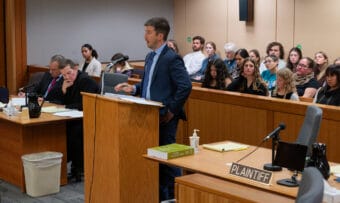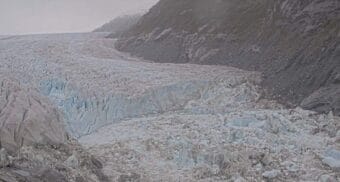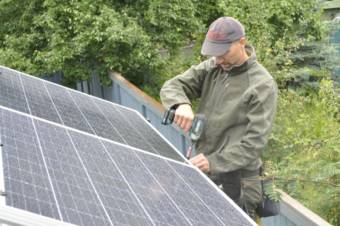
New research reaffirms the global importance of Southeast Alaska’s temperate rainforest for combating the effects of climate change. That’s according to data released Tuesday by a coalition of environmentalists and tribes opposed to old growth logging in Tongass National Forest.
Oregon-based researcher Dominick DellaSala says protecting forests is key to maintaining their function as a carbon sink.
“There’s no magic wand,” DellaSala said. “We only have a big vacuum cleaner that we can [use to] just suck CO2 out of the atmosphere and store it safely. Forests are doing that for us.”
He and his colleagues at the Woodwell Climate Research Center analyzed carbon data and found that the Tongass National Forest holds 44% of all the carbon stored by the United States’ national forests.
“Basically, when you go through an old growth forest, you’re walking through a stick of carbon that has been built up into the forest for many, many decades. Centuries,” DellaSala said. “And the largest trees in those forests store about 50% of the above ground carbon, so they are enormously important from a carbon standpoint.”
Trees store carbon by using photosynthesis to transform carbon dioxide from the air into food, which then fuels tree growth.
DellaSala introduced the findings Wednesday at a press conference organized by the Southeast Alaska Conservation Council, a Juneau-based conservation group opposed to clear cuts.
Exempting Tongass from the Clinton-era Roadless Rule was widely supported by state leaders and Alaska’s congressional delegation, who say it hindered resource development on federal forestlands. The state of Alaska recently joined a federal lawsuit seeking to oppose efforts to overturn the Trump administration’s exemption for the Tongass.
But tribal president Joel Jackson of the Organized Village of Kake added that the erosion control that healthy forests provide is key to sources of subsistence food from fish to wild game.
“My focus has always been the protection of the Tongass old growth — the remaining timber — for providing shade and pristine water for our salmon to return to the streams,” Jackson said. “That’s the most important thing to me because our life is salmon. We rely on being able to put away enough salmon for the winter — for a whole year until the salmon return. That’s our people’s main staple.”
Salmon returns to Southeast Alaska have plummeted in recent years. Last year’s commercial harvest was one of the lowest on record.
DellaSala was one of 111 scientists to sign a letter earlier this month urging the Biden administration to protect old growth and roadless areas of Tongass National Forest as part of its climate plan expected to be presented at the United Nations 2021 Climate Change Conference in November.


